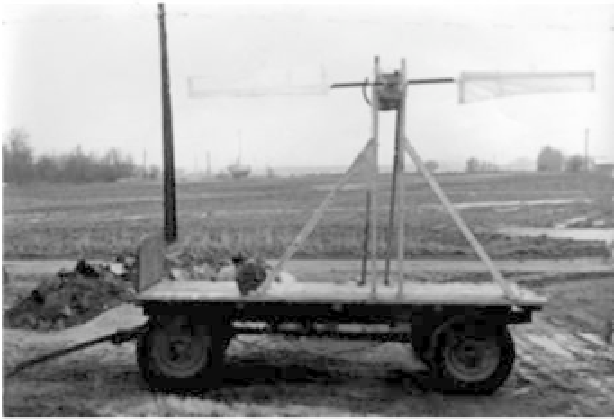Environmental Engineering Reference
In-Depth Information
winds we measured the speed of rotation at more than 500 turns
a minute. We really got quite “high” by running the rotor with a
good wind, it was like a living creature reacting to invisible
commands from the wind, our palms became hot with friction,
and the blades whirred just past our noses at a speed of
100 km/h. Looking back one must wonder how come we did not
have any accidents during one of the many times when we just
had to feel the whirl.
9.2
My First Accident
The next addition was a 2-bladed rotor with sail wings, diameter
3 m. In
I read about the experiments at Princeton
where a simple frame construction with an aerodynamically shaped
leading edge and a steel wire as trailing edge was covered with
fabric, and where the aerodynamic forces contributed to shaping
the fabric. A “sail wing” was reported to ofer the same good
aerodynamic qualities as a solid blade, but at much less efort. We
had to try that.
Sol og vind
Figure 9.1
Two-bladed experimental rotor, 1977.
Each blade was supplied with a frame made of steel pipes with
a leading edge of wood and with a steel wire as trailing edge. The
pipes were assembled with ordinary threaded fittings. The hub of
the rotor was a T-piece with a pipe for the blade in each of the lateral




Search WWH ::

Custom Search